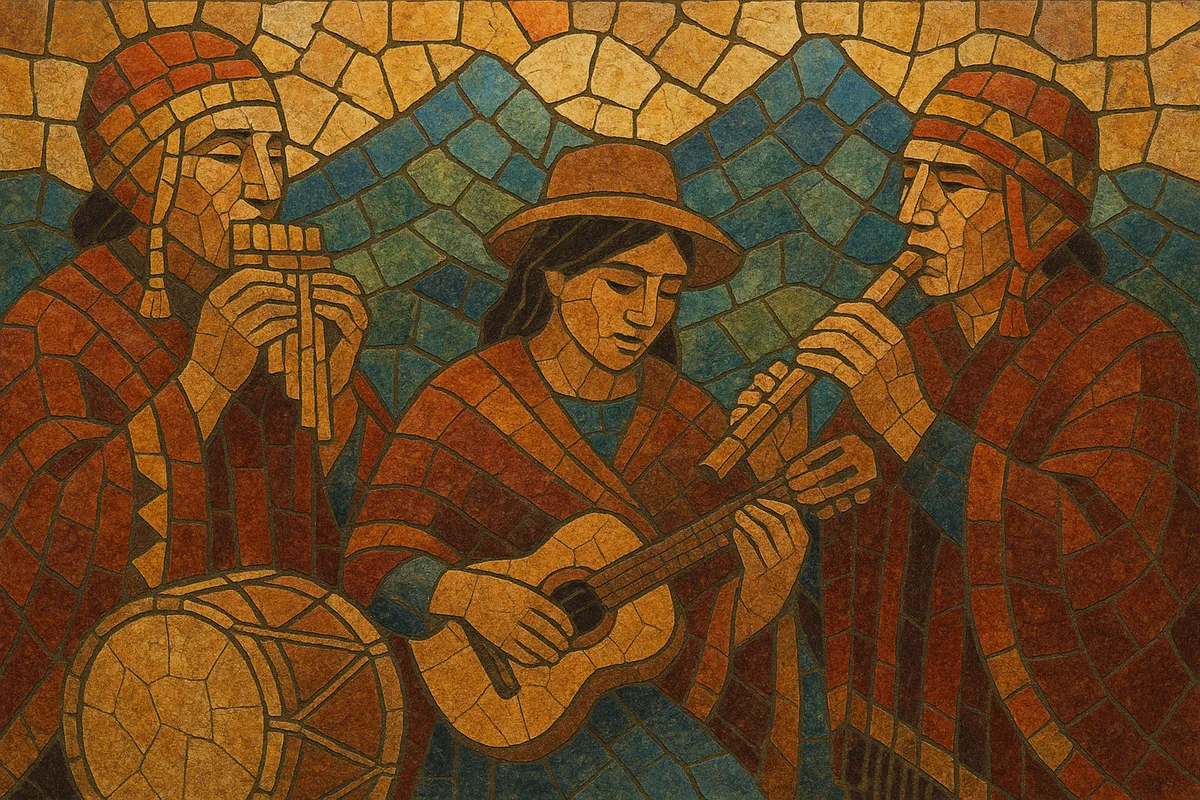Folclor andino is the pan‑regional folk music of the Andean highlands, shaped by Indigenous Quechua and Aymara traditions and later mestizo influences. It centers on wind instruments such as quena (notched flute) and zampoña/siku (panpipes), the small 10‑string charango, guitar, and deep hand‑drummed bombos, producing bright timbres over earthy rhythms.
Melodically it favors pentatonic and natural minor (Aeolian/Dorian) scales, parallel thirds, antiphonal hocketing between panpipe parts, and cyclical ostinatos. Repertoire often draws from regional forms like huayno, yaraví, carnavalito, and related highland dances, with lyrics that invoke the mountains, Pachamama (Mother Earth), love, migration, and social realities.
As a modern stage and recording genre, folclor andino coalesced mid‑20th century when urban ensembles standardized instrumentation and performance, later intersecting with nueva canción’s socially engaged aesthetics and spreading globally through tours and world‑music circuits.
Indigenous Andean music predates European contact by centuries, featuring aerophones (panpipes, flutes) and communal ensemble practices. After the 16th century, Iberian strings (vihuela/guitar) and harmonies blended with local scales and rhythms, giving rise to mestizo song forms like yaraví and later huayno.
Mid‑20th‑century internal migration brought highland musicians into urban centers in Bolivia, Peru, Chile, and beyond. Professional groups standardized a signature sound around charango, quena, zampoña/siku, guitar, and bombo, shaping the modern stage presentation of folclor andino. Landmark repertoire such as “El Cóndor Pasa” became emblematic and traveled internationally.
The Andean folk revival coincided with nueva canción’s socially engaged poetry and performance. Ensembles in Bolivia and Chile (and circuits in Argentina/Europe) popularized the style, pairing traditional timbres with contemporary arrangements and political themes, amplifying Andean identity across Latin America and abroad.
From the 1980s, touring ensembles and world‑music labels brought folclor andino to Europe, North America, and Asia. The style influenced rock andino, electro‑acoustic folktronica, and new age treatments, while contemporary artists continue to mix traditional forms with pop, jazz, and electronic production, keeping the core instruments, scales, and communal ensemble ethos intact.


